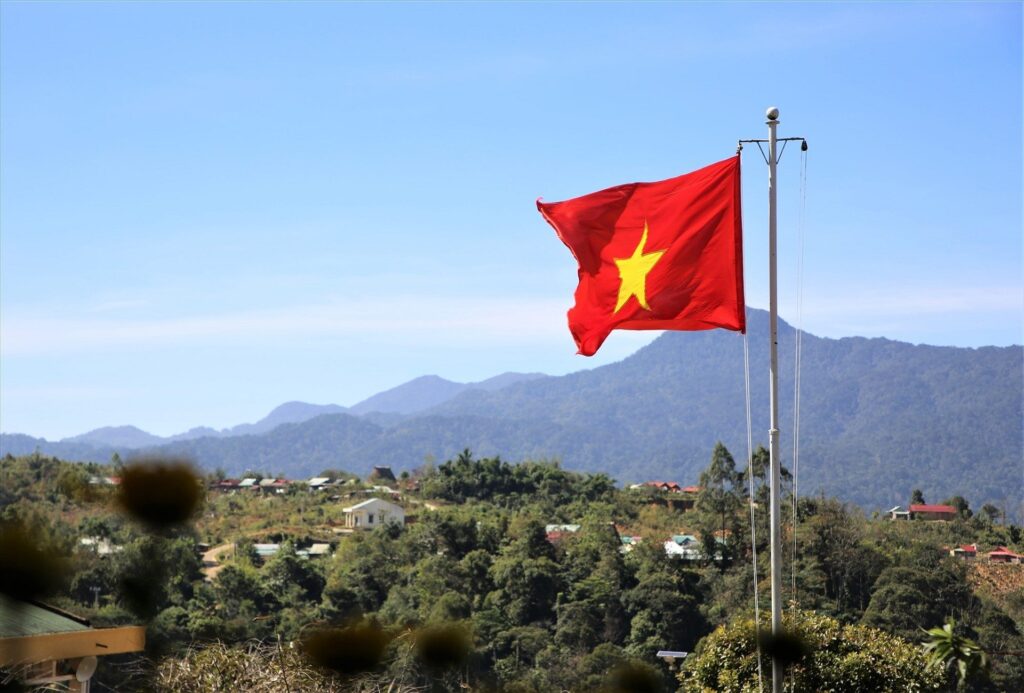Welcome to VNAround (vnaround.com) – more than a blog, we’re your Viet guide to uncovering Vietnam’s rich history and culture. Today, let’s dive into the story behind one of Vietnam’s most enduring symbols: its national flag. With its bold red background and golden star, the Vietnamese flag represents the nation’s history, struggles, and unity.
1. The Design of the Vietnamese Flag
Description
The Vietnamese national flag, also known as the Red Flag with a Golden Star, features a simple yet powerful design:
- Red Background: Represents the blood shed by those who fought for independence and freedom.
- Golden Star: Symbolizes the unity of Vietnam’s people, with each of the five points representing workers, peasants, intellectuals, youth, and soldiers.
2. Origins of the Flag
Early Inspirations
The flag’s design is rooted in the ideals of equality and solidarity that emerged during Vietnam’s fight for independence. The red background reflects revolutionary principles, inspired by other socialist movements globally.
The Creation
The flag was first designed in 1940 by Nguyen Huu Tien, a revolutionary who wanted a symbol to rally the people during the resistance against French colonial rule. His vision was to create a flag that reflected the unity and strength of the Vietnamese people.
3. The Flag During the First Indochina War
Adoption by the Viet Minh
In 1941, the Viet Minh (League for the Independence of Vietnam) adopted the flag as their symbol in their fight against French colonial forces. It became a rallying point for unity and resistance during the First Indochina War.
Proclamation of Independence
On September 2, 1945, when Ho Chi Minh declared Vietnam’s independence from France, the flag was raised during the historic ceremony at Ba Dinh Square in Hanoi. This marked the first official use of the flag as a national symbol.
4. The Flag During the Vietnam War
Division of Vietnam
After the Geneva Accords of 1954, Vietnam was divided into two states:
- North Vietnam: Used the red flag with a golden star, symbolizing its communist ideology.
- South Vietnam: Adopted a different flag, featuring three horizontal red stripes on a yellow background.
Reunification
Following the victory of North Vietnam in 1975, the country was officially reunified as the Socialist Republic of Vietnam. The red flag with a golden star became the national flag for the entire country.
5. The Significance of the Flag Today
A Symbol of Unity and Resilience
Today, the flag remains a proud symbol of Vietnam’s unity and the sacrifices made by its people for independence. It is prominently displayed during national holidays, events, and international gatherings.
Don’t know where to visit in Vietnam, check out these tours!
Klook.comCultural Pride
The flag represents Vietnam’s cultural identity and historical journey. It is a source of pride for Vietnamese people, both at home and abroad.
6. Flag Etiquette in Vietnam
When and Where to Display the Flag
The national flag is displayed on major holidays, including:
- National Day (September 2): Commemorates the country’s independence.
- Liberation Day (April 30): Marks the reunification of Vietnam.
Respect for the Flag
Vietnamese people treat the flag with great respect. Damaging or disrespecting the flag is considered offensive and unlawful.
At VNAround (vnaround.com), we believe understanding the history of Vietnam’s national flag offers a deeper appreciation for the country’s journey. The flag is more than just a symbol; it’s a testament to Vietnam’s resilience, unity, and pride.
Let us know your thoughts on Vietnam’s national flag and stay tuned to VNAround for more historical insights and cultural stories! 🌏



